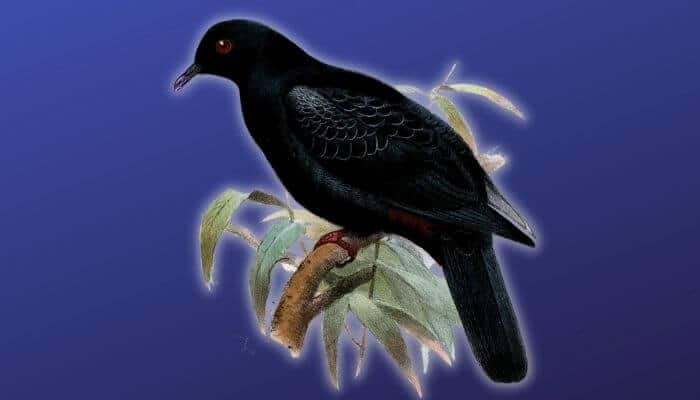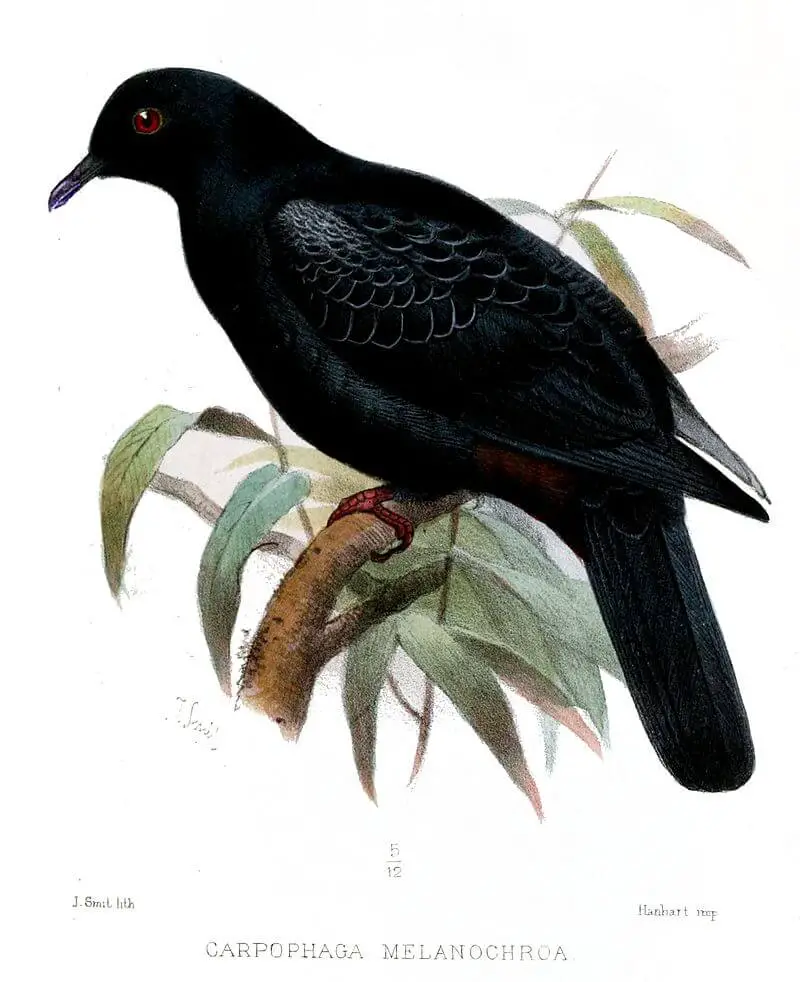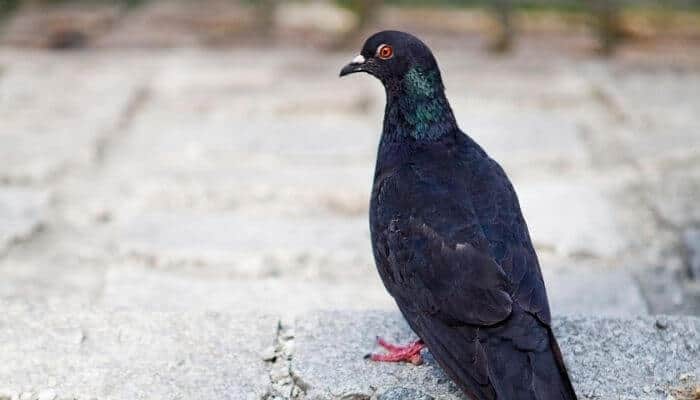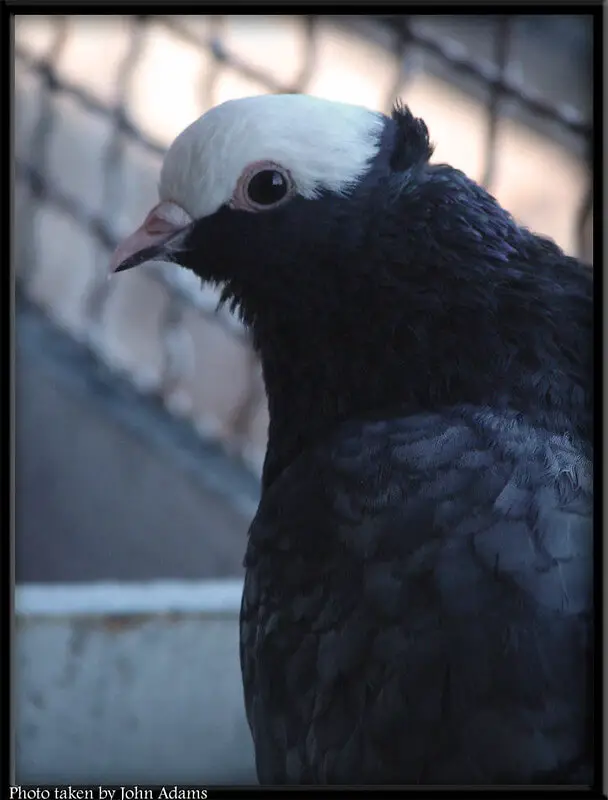A few of us might have spotted an exceptionally dark pigeon here and there.
While fascinating, it can often be nothing more than a dirtier-than-usual common pigeon.
In reality, true black pigeons are pretty hard to come by, and our black imperials are no exception.
Existing only in a handful of islands in Australasia, black imperial pigeons might be considered rare by some.

However, researchers have found that this breed is a “least concern” species, meaning it’s not in any danger of extinction.
Black imperial pigeons are a bit of a mystery, though, as scientists and researchers may have not spent a ton of time studying them.
Their behavior and exact population are still unclear to us.
With all that said, let’s take a look at everything we do know about the black imperial pigeon breed, including its history, habitat, diet, and appearance.
Origins and History
Since they were first identified in 1878 by the zoologist, Philip Sclater, black imperial pigeons have acquired many common names.
Most notably, this breed was known as Bismarck imperial and silver-laced imperial pigeons.
The International Ornithologists’ Union designated the name “black imperial pigeon” to be its common name since then.
This was to stop the confusion between this breed and yellowish imperial pigeons, which were also called Bismarck imperial pigeons at the time.
Black imperial pigeons were at first classified as Carpophaga (fruit-eating) melanochroa before that genus was lumped with Ducula (imperial pigeons.)
The breed is now called Ducula melanochroa.
Distribution and Habitat
Black imperial pigeons are endemic to the Bismarck Archipelago, a group of islands in Papua New Guinea.
They mainly occur in the islands of Duke of York, New England, Watom, and Umboi.
Black imperials live in the forest canopy on those islands and nest high in the trees.
They’re often found in elevated areas, anywhere between 200-1,800 meters above sea level.
Black imperials don’t exactly migrate, though they’re sometimes seen in areas where they don’t usually reside, such as the lowlands of New England island.
As a frugivorous breed, they rely exclusively on the canopy’s supply of fruit for sustenance as far as we know.
Black imperial pigeons are often spotted alone but may be seen eating in small flocks.
Thankfully, the black imperial pigeon breed isn’t considered to be endangered.
It’s classified as a breed of “least concern” by the International Union for Conservation of Nature.
This classification is due to its stable numbers.
However, it’s thought that the breed’s population has started declining due to loss of habitat.
Appearance and Characteristics
Black imperial pigeons are the only type of pigeons that have an entirely black body.

They have bright red eyes, gray bills, and dark-red legs.
| Wingspan | Length | Weight | Coloring | |
|---|---|---|---|---|
| Black Imperial Pigeon | Unknown | 38 – 43 cm | 661 – 665 g | Slate black with some silver |
| Average Feral Pigeon | 64 – 72 cm | 32 – 37 cm | 300 – 500 g | Bluish gray with some black |
As with pied imperial pigeons, they have a heavy build with short, visible necks.
Males and females look similar, while juveniles might have lighter colors overall.
Black imperial pigeons are relatively large, weighing around 23 ounces as adults.
These pigeons might look all black from a distance, but they have a fine silver or white line on the tips of their flight feathers.

Their undertail coverts are often dark brown, while the undertail itself is white or gray.
The sound of this breed is similar to your common pigeon’s low-pitched coos, except that it’s deeper.
This elusive breed wasn’t spotted by scientists and researched enough to fully understand its behavior.
In fact, only one known black imperial pigeon nest was found by researchers.
Similar Breeds
There aren’t many solid-black breeds of pigeons out there, making this one pretty special.
The closest breed in terms of color is probably the metallic pigeon, though it’s quite easily distinguishable from the black imperial pigeon.
Metallic pigeons have a bright white throat patch and reddish-brown chest.
You may mistake one for the other if you’re looking at its back.
Other than that, there are black pigeons out there that were developed through selective breeding.
It’s not an easy process, but experienced pigeon breeders can end up with all-black pigeons that belong to different breeds such as the Mookee pigeon for example.

The Black Imperial Pigeon is categorized into the Brenchleyi species group of chestnut-bellied pigeons.
The species in the group include the:
- Chestnut-Bellied Imperial Pigeon (Ducula brenchleyi)
- Goliath Imperial Pigeon (Ducula goliath)
- Collared Imperial Pigeon (Ducula mullerii)
- Goliath Imperial Pigeon (Ducula melanochroa)
- Vanuatu Imperial Pigeon (Ducula bakeri)
- Pinon Imperial Pigeon (Ducula pinon)
Conclusion
Despite having a limited range on the map, the black imperial pigeon breed is in no danger. It exists on only a few islands in Papua New Guinea.
As you can see, the black imperial pigeon breed is equal parts elegant and mysterious.
All we know about it is where it exists, what it eats, and varying estimates of its population.
So it’s safe to say this is not a breed you’ll end up raising in your home.
